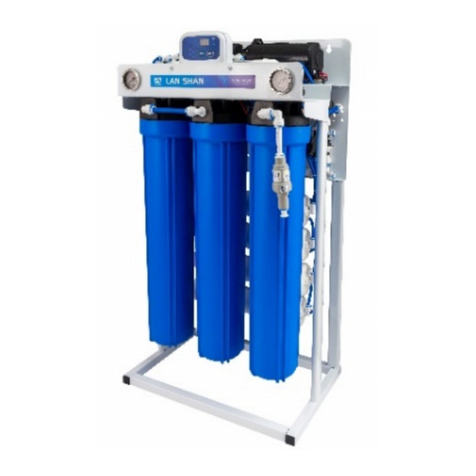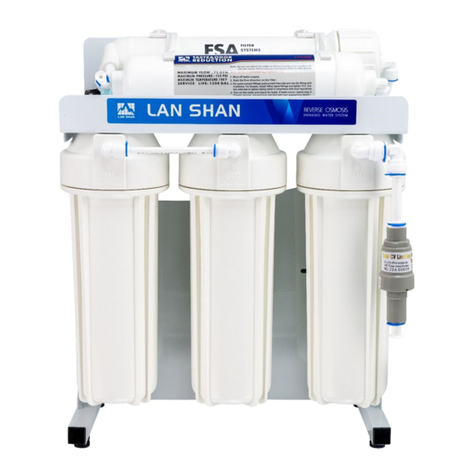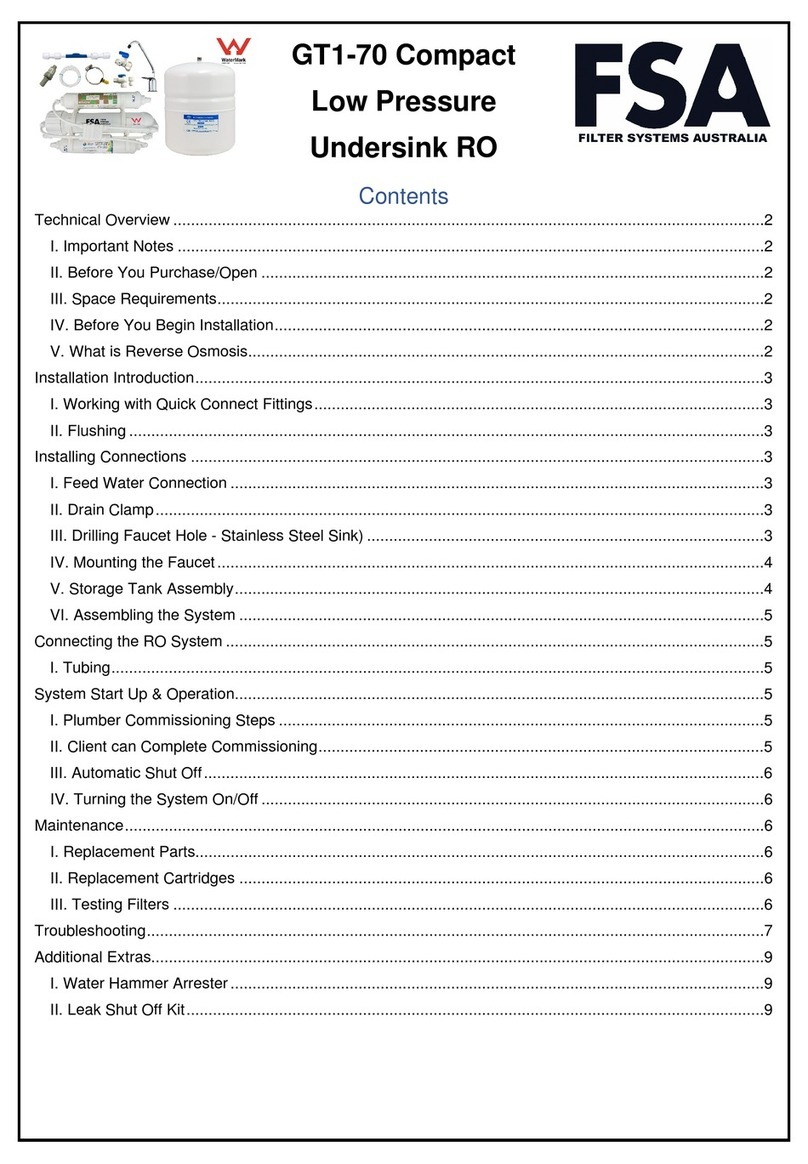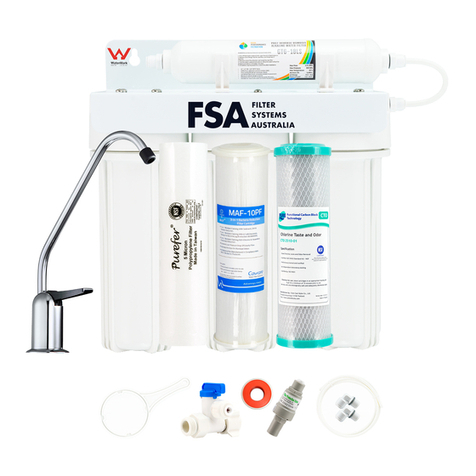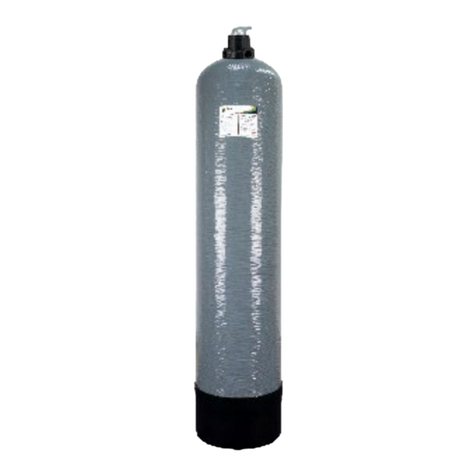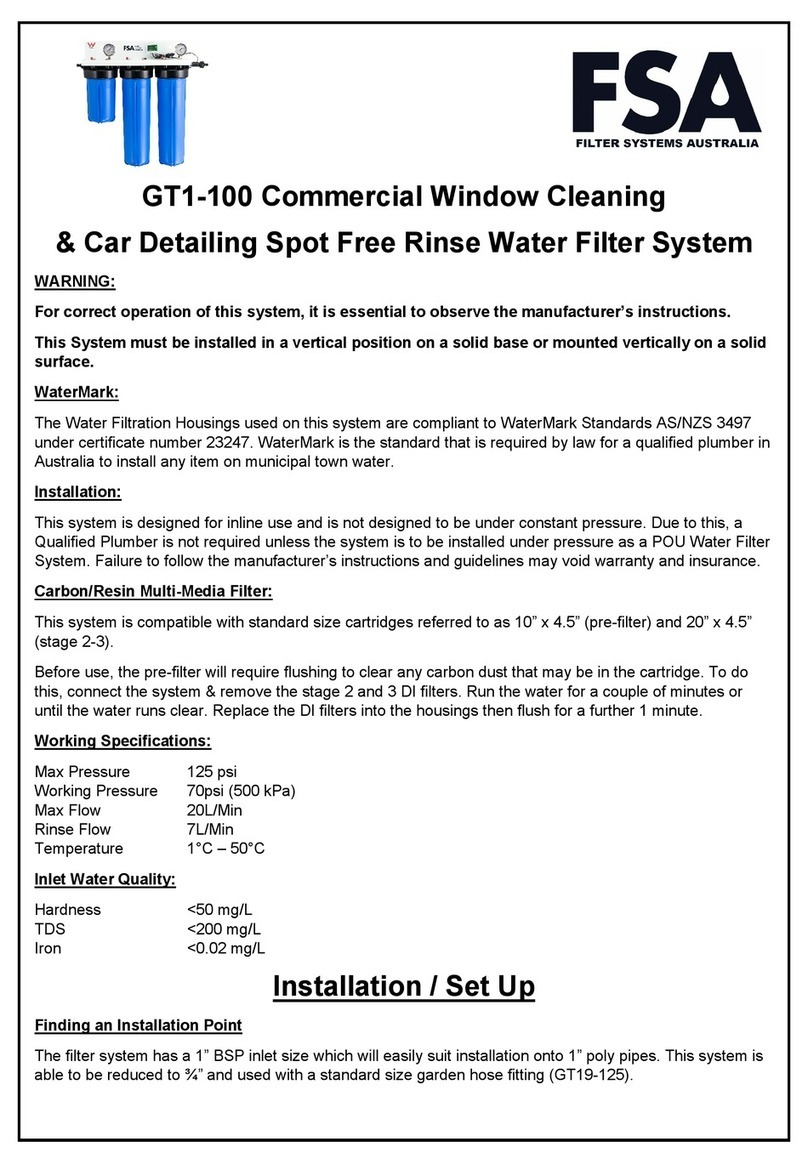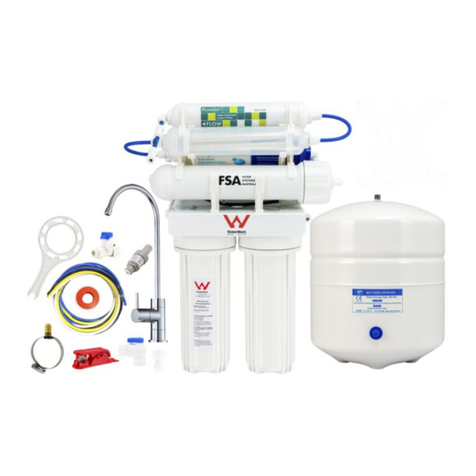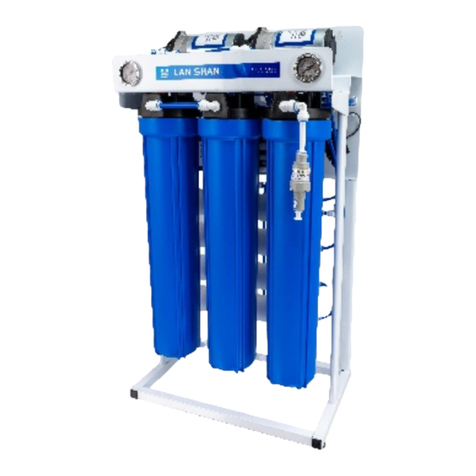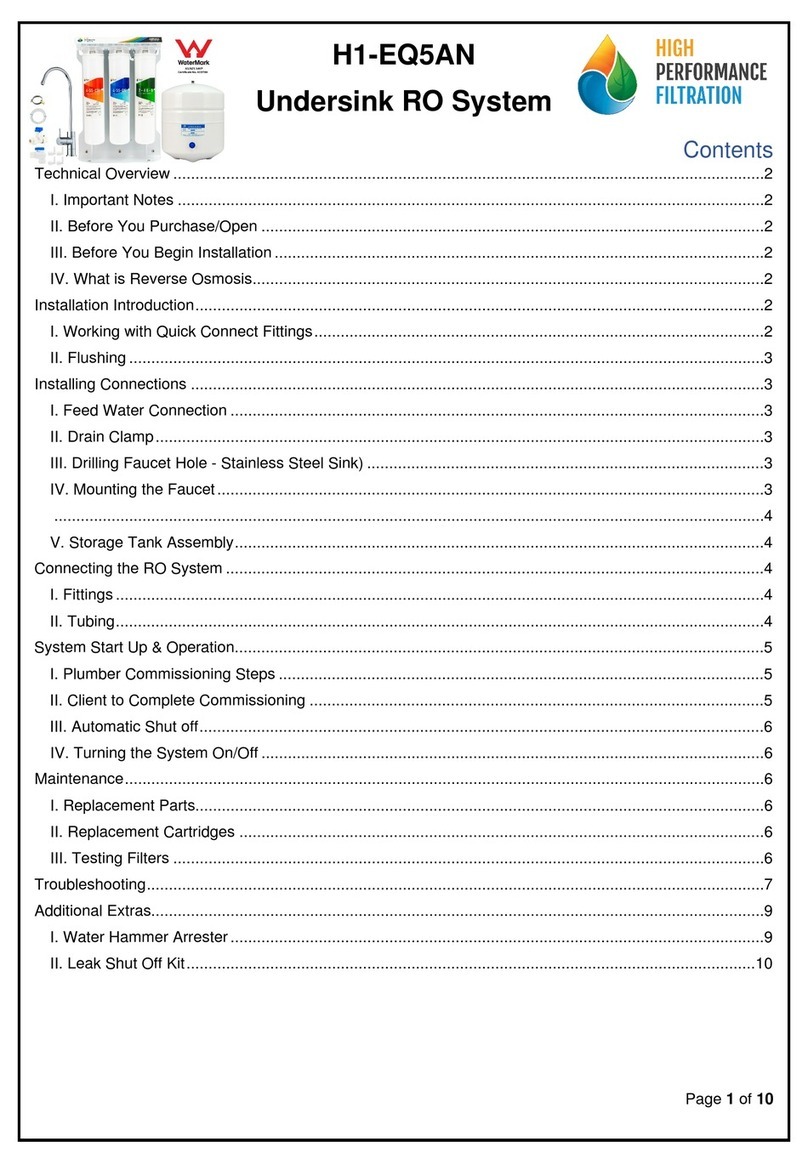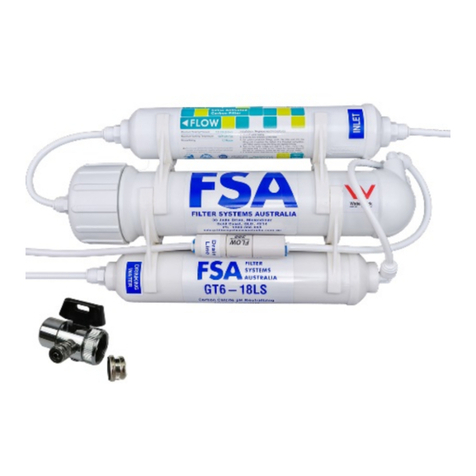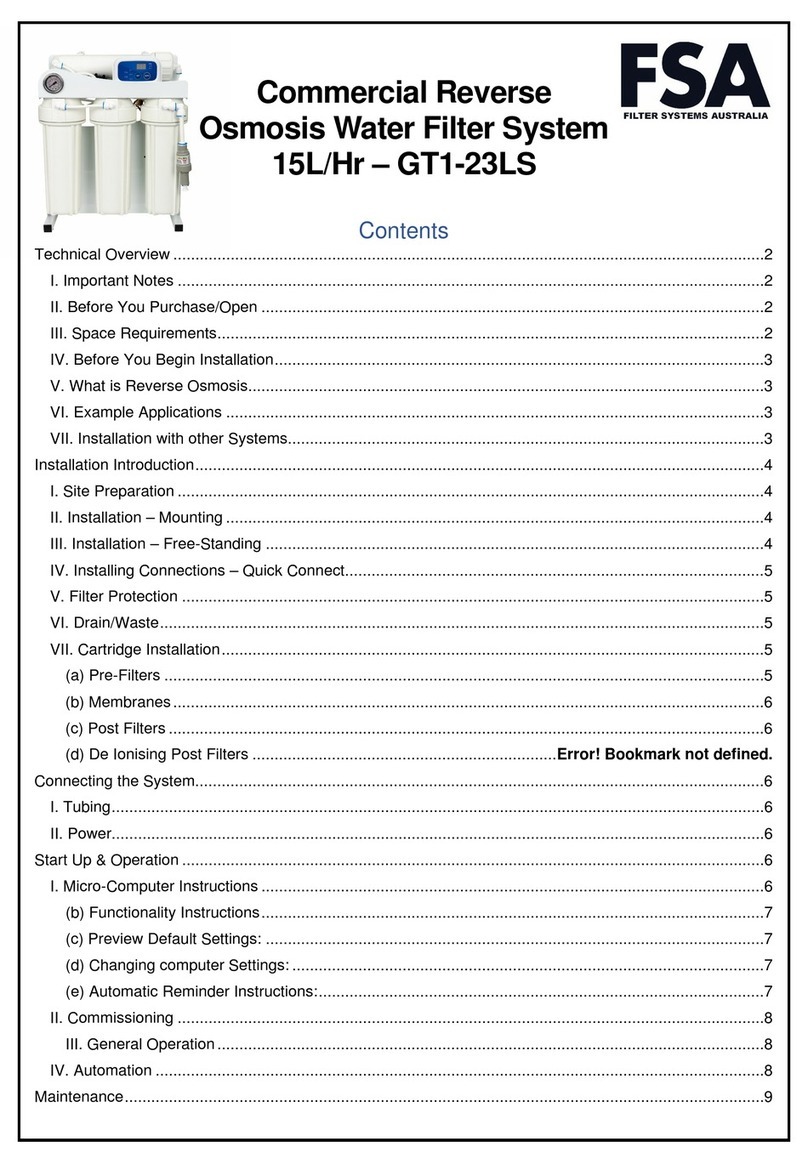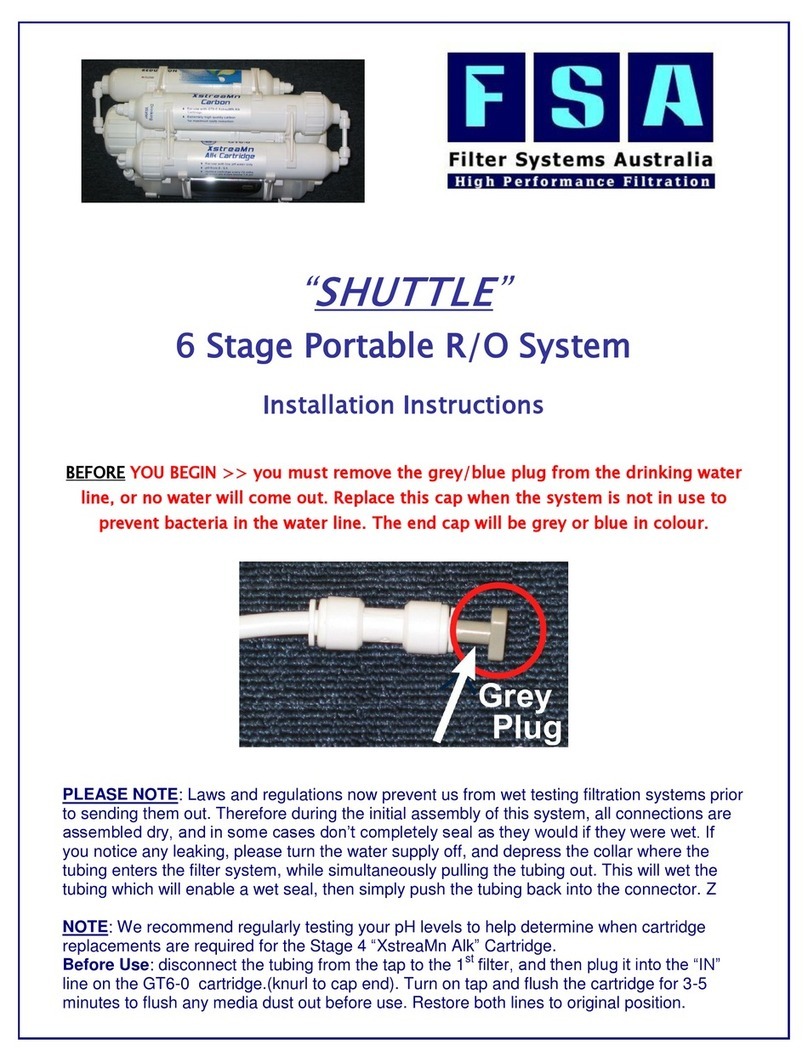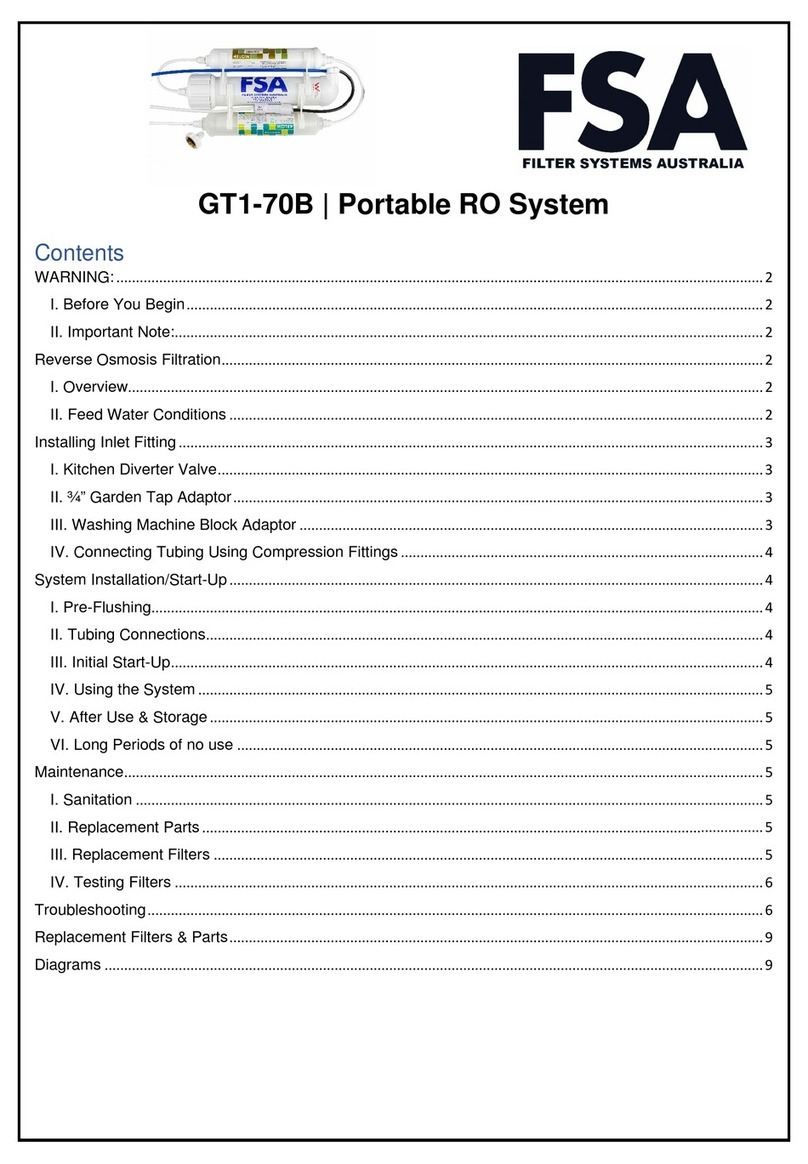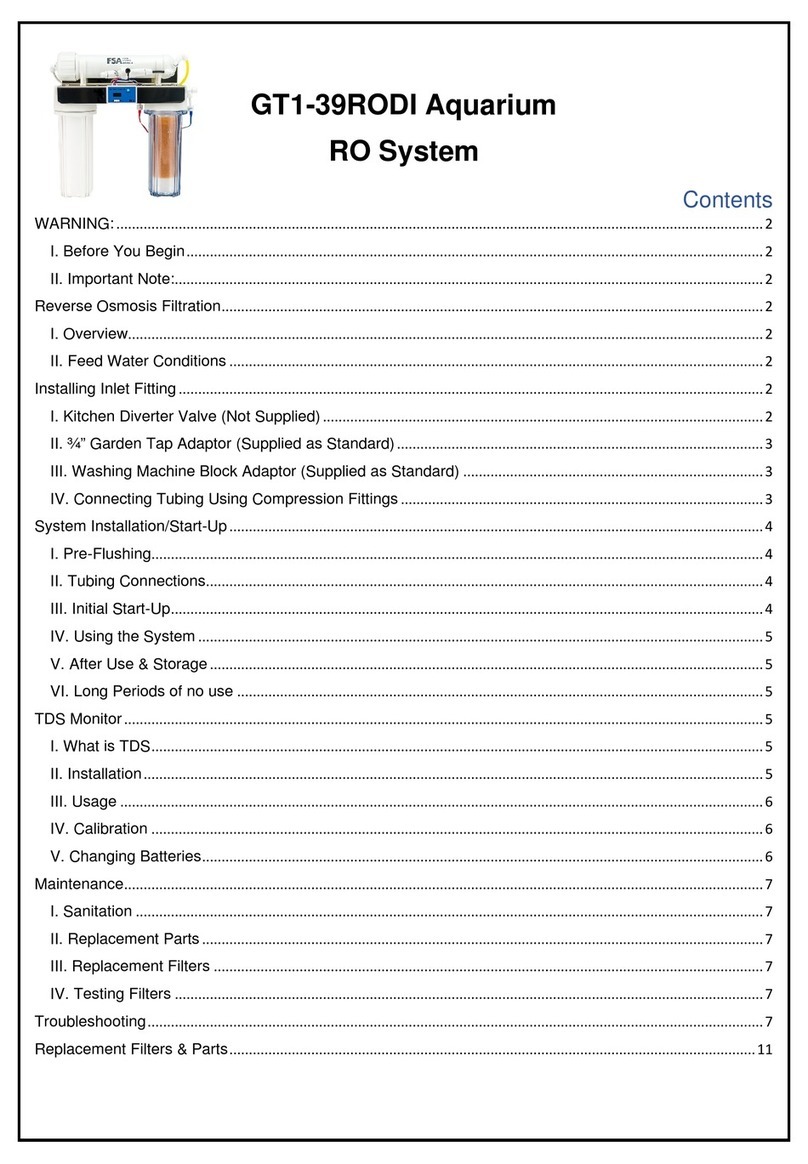
Page | 7
9. This system is an alkaline unit which means minerals are dissolved into the water to balance the pH
and ‘alkalise’ the water. When the system is new the pH can be higher than normal (which is still
safe to drink) but you may notice a ‘bitter’ or ‘metallic’ taste in the water which is caused by the pH,
NOT from any harmful chemicals or plastics. If you are not accustomed to drinking RO water or
Alkaline water, you may notice the water may taste ‘strange’ to your individual palate. This is due to
the pH level in the water and once your body adjusts, you will no longer have an issue with taste.
III. Automatic Shut Off
This system is fitted with automatic shut off. It is designed so that while the tank is full of water, the system
is under pressure – this creates back pressure on the shut off valve and closes off the production water
which will stop the water flow to the drain. When you draw water from the system, it will start back up and
begin to produce water. The water is produced @ 8L/Hour +/- so if you take 1L of water, you can expect the
system to run for approx. 5 – 15 minutes. Keep this in mind in case you hear running water and think the
system is ‘leaking’ or ‘not shutting off’.
IV. Turning the System On/Off
If for any reason the system needs to be turned off – for example if leaking occurs or you are going away
for over 48 hrs, follow the below steps to shut down the system.
1. Turn off the Feed Water Connection under the sink by turning the blue valve 90°.
2. Shut off the Storage Tank by turning the blue valve 90°
3. Briefly open the Faucet tap to bleed out excess line pressure and then close it again.
To start the system, open the Feed Water Valve and Storage Tank Valve. If the system has not been used
for over 48 hrs – discard the first 45 seconds of water. If the system has been shut down for over 1 week –
discard a full tank of water.
Maintenance
I. Replacement Parts
Filtration tubing should be replaced periodically (about every 3 – 5 years). There is no specific time. Fittings
should be replaced every 3 – 5 years due to wear & tear.
We suggest replacing the Pressure Limiting Valve every 2 years. If the system is having issues with the
shut off valve and is over 2 years old, the 4-way shut off valve should also be replaced.
II. Replacement Cartridges
Cartridges have a varying life span but generally can be replaced under the following guidelines under
normal working conditions; Stage 1, 2 – Replace Every 6 Months. Stage 4, 5 – Replace once a year. The
Membrane (Stage 3) can vary significantly depending on a range of factors including but not limited to
water quality and usage volumes. We generally find that on poor quality water such as Bore water*, or
Mains Water in areas of WA, NT and SA the membranes generally last between 1 – 2 Years. Other areas
where the water is less harsh the membrane can last anywhere up to 4 years without requiring
replacement.
III. Testing Filters
Reverse Osmosis membranes have a variance in their filter life and this is affected by several things
including water quality, usage, temperature and filter maintenance. As they are the workhorse of the
system, they are the most important filters to monitor and keep maintained.
To measure the effectiveness of the RO membrane you will need a TDS test meter. Draw a sample of tap
water (to get your base reading), then collect a sample of water directly off the membrane outlet (before it
goes through any other filters). This is your ‘pure’ water. On the GT1-26-4 System, you will need to draw
water off the line that would normally plug into the storage tank. To calculate the membrane effectiveness,
you will need to subtract the percentage of contaminant reduction from the feed water. E.g. Feed Water
200mg/L TDS – RO Membrane removes 97% (+/-) Therefore, 200 – 97% = 6mg/L. Factors can influence
the final TDS of the water and it will depend upon what is in the feed water to begin with. A membrane is












